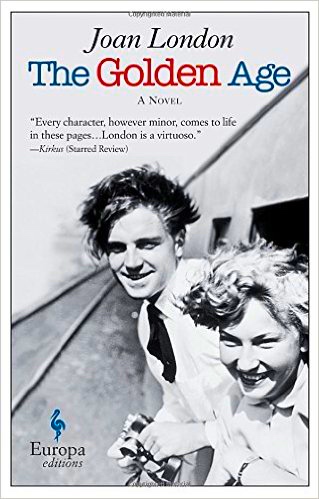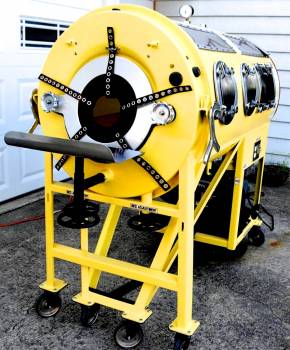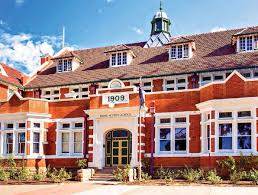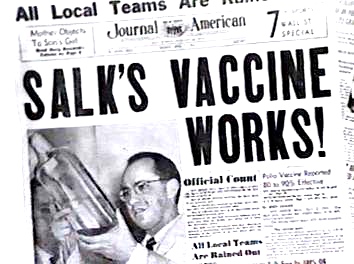 Note: This novel was WINNER of the Prime Minister’s Literary Award for Australian Fiction; WINNER of the Patrick White Literary Award, one of Australia’s highest honors; WINNER of the Queensland Literary Award for Fiction, and WINNER of the New South Wales Premier’s People’s Choice Award for 2015.
Note: This novel was WINNER of the Prime Minister’s Literary Award for Australian Fiction; WINNER of the Patrick White Literary Award, one of Australia’s highest honors; WINNER of the Queensland Literary Award for Fiction, and WINNER of the New South Wales Premier’s People’s Choice Award for 2015.
“He felt like a pirate landing on an island of little maimed animals. A great wave had swept them up and dumped them here. All of them, like him, stranded, wanting to go home….Ever since the fever of polio had subsided, light had seemed less bright to him, older, sadder. –Frank Gold, age twelve, polio victim.
 Highly lauded Australian author Joan London sets her newest novel in The Golden Age, a rehab facility for children suffering the paralyzing aftereffects of polio in the sparsely settled outskirts of Perth, Australia, which, during the early 1950s, had a disproportionately large percentage of child polio victims. Filled with realistic, straightforward details and a complete lack of easy sentimentality, the novel presents vibrant pictures of the people, places, and moods of the communities in and around Perth affected by this world-wide disease. Many readers who grew up before the development of Jonas Salk’s “miraculous” polio vaccine in 1955 will find their own memories of this fraught time returning in abundance. August, the hottest month of the year in the US, was also the time when polio struck the greatest number of children, some of whom were their friends. Parents tried to protect children by forbidding them to go to public places, like the movies, that month, and they often postponed their children’s birthday parties to avoid exposing a whole group of friends to “the demon.” The worst punishment during the brutal “dog days” of August, was being prohibited from going swimming in local lakes and swimming holes – all because the children might “catch polio” from germs hiding in the water.
Highly lauded Australian author Joan London sets her newest novel in The Golden Age, a rehab facility for children suffering the paralyzing aftereffects of polio in the sparsely settled outskirts of Perth, Australia, which, during the early 1950s, had a disproportionately large percentage of child polio victims. Filled with realistic, straightforward details and a complete lack of easy sentimentality, the novel presents vibrant pictures of the people, places, and moods of the communities in and around Perth affected by this world-wide disease. Many readers who grew up before the development of Jonas Salk’s “miraculous” polio vaccine in 1955 will find their own memories of this fraught time returning in abundance. August, the hottest month of the year in the US, was also the time when polio struck the greatest number of children, some of whom were their friends. Parents tried to protect children by forbidding them to go to public places, like the movies, that month, and they often postponed their children’s birthday parties to avoid exposing a whole group of friends to “the demon.” The worst punishment during the brutal “dog days” of August, was being prohibited from going swimming in local lakes and swimming holes – all because the children might “catch polio” from germs hiding in the water.

Some polio victims lived their entire lives in an iron lung, just in order to breathe. Fewer than a dozen such victims still survive to the present.
Main character Frank Gold, a twelve-year-old Jewish boy who has immigrated to Australia from Hungary, has already survived the Nazi terrors in his country in which his father was captured and assigned to a work camp. His mother hid Frank with someone “safe” whom she knew across the Danube River so that Frank would not be caught if she herself were apprehended. He lived indoors with her friend, avoiding windows for months, until the family could finally reunite and then escape the country. Ultimately being transported to a community near Perth, Australia, the family once again faces disaster: Frank “catches polio” and is paralyzed, unable to walk. Assigned to The Golden Age rehabilitation center for therapy, he and his only friend, Elsa Briggs, also age twelve and paralyzed, are the oldest children there, dependent upon each other. The novel flashes back to when Frank was previously in the Infectious Diseases Branch of the Royal Perth Hospital, where he was one of the youngest patients, almost a mascot to the other residents, and it is there that he became friends with Sullivan Backhouse, a youth in his late teens confined to an iron lung but determined not let his physical limitations quell his desire to write poetry. It is Sullivan who encourages Frank intellectually, and gives him a goal – he, too, wants to become a poet – and when Frank is later moved to The Golden Age, for younger children, he sees himself as the “little maimed animal” he describes in the opening quotation of this review.

The Gellert Hotel and the Szabadsag (Liberty) Bridge in Budapest were two landmarks for Frank’s mother when she took him to stay with an acquaintance across the Danube during the last part of the war.
As the book develops, the emphasis is on character, and the reader soon gets to know the people in the facility, including the nurses, therapists, and teachers; the families of Frank and Elsa; and all the patients Frank comes into contact with, including their stories about the moment they first knew they had polio. What makes all these memories so effective is that the details feel so ordinary, so typical, not only of the lives of these young children, but also of the lives of readers from that age who will universally empathize with them and share their traumas. Details, no matter how significant, are revealed casually here, in the manner of children, creating great drama in their irony. While in Budapest, Frank’s mother, for example, must decide whether to take Frank to stay in Budapest with an acquaintance who is not Jewish. Eventually, she decides that “it was more acceptable to her if her son was killed by a bomb [there], along with everybody else, rather than singled out, hunted down and left to drown in the Danube tied to another who had been shot. Two, or even three, for one. In that way, bullets were saved.”

The Perth Modern School, founded in 1909, gave Frank a full scholarship to attend. His father now doubts that he will be able to do that.
Flashing backward and forward, the author creates a broad and dramatic scope without becoming tied down to the big events of the historical period and the big emotions of their everyday lives. When Elsa chides Frank for being critical of other children at The Golden Age, she tells him that he lacks “Christian charity.” His explanation that he is not a Christian but a Jew makes her realize that she’d never thought of Jews as not being Christian. “Jesus was a Jew,” she remarks. To which Frank responds, smartly, “And you know what happened to him. We Jews have to be on the lookout.’ Declaring him a “funny boy,” she sees in him “the look of someone who has lain in bed thinking, alone, for too many nights,” an observation the reader, presumably older and wiser, will accept fully.

In 1955, Jonas Salk created a successful vaccine against polio. Cases between 1955 and 1957 were reduced by 80 percent.
With the nurses and other employees of the Golden Age eventually going out to dances and flirting, the novel introduces the ideas of love and sex, and soon Frank and Elsa, though innocent, feel completely in love, even as some of the adults they know, responding to the traumas they, too, have faced, look for love and sex in new places. Frank and Elsa, desperate for some sort of connection with the outside world and anxious to live according to their own desires, rather than in the circumscribed world of their illness and its limitations, soon begin to experiment with ways to show their love to each other. Eventually, the time comes for both to leave The Golden Age, released to their parents’ care where they must deal with their recovery on their own terms, though alone and separated by distance and social backgrounds.
The final chapter, entitled “New York,” unnumbered and different from the others in intensity, begins about fifty years after the previous action of the novel and brings all the elements of the novel together, in terms of both plot and themes. The grandson of one of the main characters visits the other character and asks about the love between the two young people during the polio epidemic, wonders what that character has learned over time, and questions what the character is doing now. Abrupt in its change of time and place, and surprising in its revelations, the conclusion fits with the statements made by these characters earlier in the novel. Some readers may be unhappy that the conclusion is not what they expected, or disappointed in the characters and their decisions, a testament to the reality of these characters and their ability to involve the reader. Some, however, will cheer this final scene for its honesty, an appropriate ending for a novel in which very young people make life-changing decisions to preserve their sense of self, while, at the same time, circumstances beyond their control are also at work to change their futures.
Photos, in order: The author’s photo appears in http://www.theaustralian.com.au/
The iron lung is shown on http://maureenhelen.com/
The Szabadsag (Liberty) Bridge and the Gellert Hotel are iconic landmarks in Budapest, and were noted as part of Ida Gold’s trip with Frank when she took him across the river to stay more safely with an acquaintance across the river. http://www.budapesthotelreservation.hu/
The Modern School, built in Perth in 1909, offered Frank a full scholarship, but his father is not sure he will be able to attend now that he is crippled. http://www.perthmodern.wa.edu.au/
In 1955 Jonas Salk successfully developed a vaccine against polio. Between 1955 and 1957, the number of cases dropped by eighty percent. http://medicinalanimalexperimentationpointlesscrueltyornecessaryevil.weebly.com
ARC: Europa Editions
